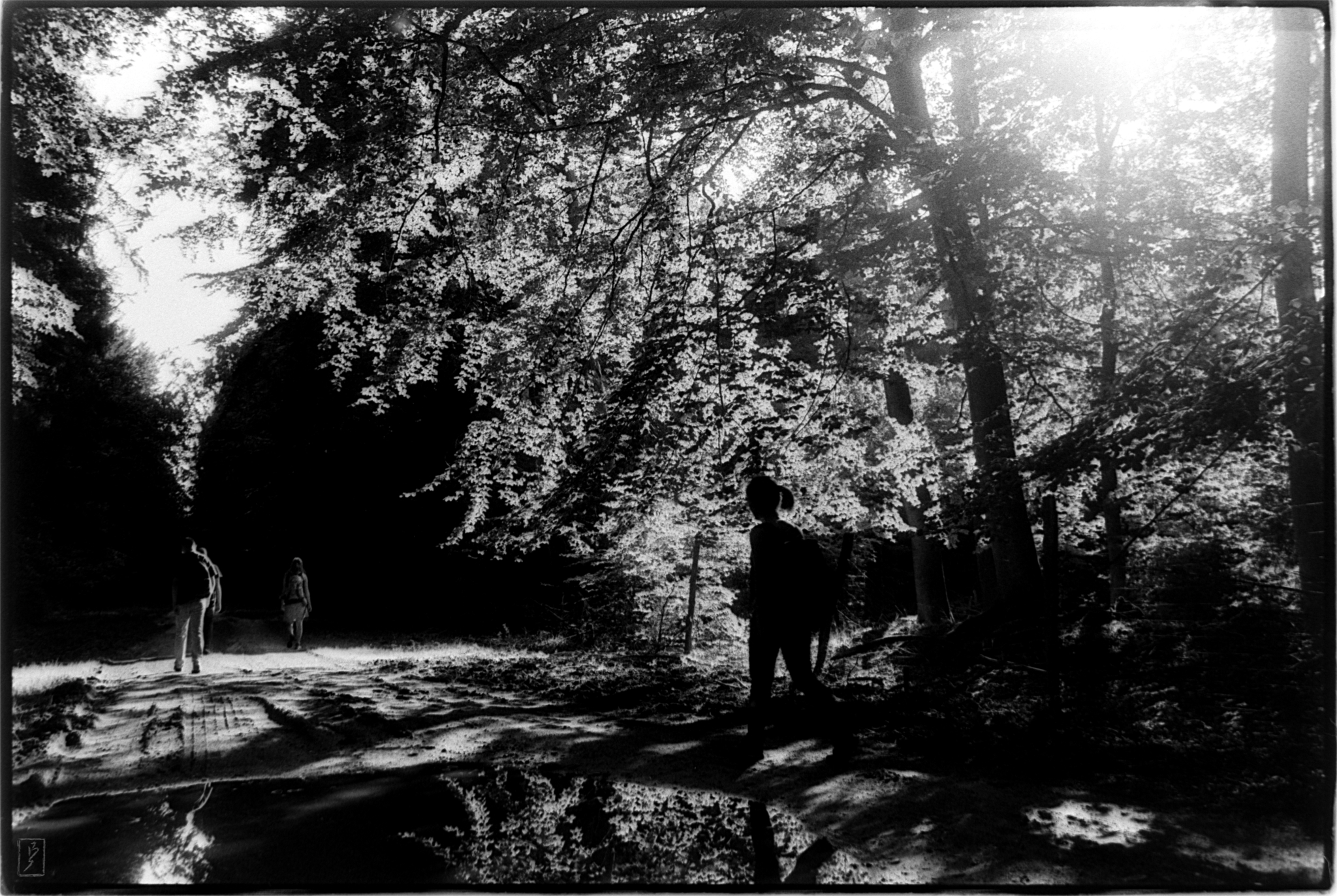Just to prove I’m still alive.
The struggle continues: Here the lens of the Rollei 35, which I always carry around in my pocket for opportunities like this, has a hard time with the stray light. Instant Aura, eh?

In the last few days and weeks I have been too busy to get much real photography done, but I was able to at least improve the speed of my workflow, using a slide copier attached to a digital slr.
The problem
Until now, it took me a long time to get the photos I made into a presentable form. One of the reasons for this was my trusty “Epson Perfection V370 Photo” flatbed scanner. While I cannot fault the quality of its output, it takes about three minutes to scan a negative, which for the usual film strip of 36 negatives quickly adds up to serious time. Furthermore, this is not even counting the time needed to clean up the resulting files (removing dust spots from the pictures, adjusting the grey values, etc.).
The solution?
I decided to try a different approach, using a digital slr to photograph my negatives and thus reduce the time to get digital files. For this, I now use a slide copier, a machine originally used to make copies of slide film (or negatives) with a normal camera. It basically just consists of rails to keep the film to be copied at a precise distance from the camera and provisions to adjust this distance as needed. The one I got was manufactured by Pentax as an accessory for their cameras sometime in the 1980s. Thanks to Pentax still utilising the same lens mount (the infamous K-mount) on today’s digital cameras, it is no problem to seamlessly connect it to a modern camera for producing digital copies of the negatives.

The process
This is how I do it: The slide copier is connected to a tripod and the camera is attached to its back. The adjustments needed to set the right distance between the negative, lens and camera are done in advance, based on measurements I took before with a test negative. Then the whole apparatus is aimed at a white curtain in direct sunlight, to provide a uniform, strong lightsource to illuminate the negative. After the right exposure setting for the negative has been set on the camera (the histogram displayed by the camera is extremely helpful for this), a full film can be quickly “scanned” with little need for further adjustments. (Perhaps a slightly dense or thin negative might require some exposure compensation, again, I keep an eye on the histogram provided by the camera.) After about a quarter of an hour, the digital files are ready to be uploaded to the computer.
Advantages
The advantages to this process are manyfold. Speed is first and foremost. Using the time saved on digitizing the film for doing the digital darkroom work, I can finish the photos much faster. Secondly, the direct manual settings on the digital camera allow for much more control of the scanning process (at least compared to a consumer-level scanner).
Since this is a “lo-tech” approach, it can also be easily upgraded and used for a long time: Just connect the latest digital camera to the back and the quality of the digital files will keep up with the latest technological advancements. (Or the advancements of second-hand gear, one or two generations behind…)
Finally, while the principle of capturing light shining through the negative with a digital photo-sensor is the same as with the scanner, the files produced by the camera seem to have much more “bite”.
Disadvantages (or room for improvements)
Of course there are disadvantages to this process, too. Most obviously, the slide copier was designed to be used with film cameras, in other words, to use the “full frame” sensor format. Because the digital cameras at my disposal all use the cropped sensor format (APS-C), the scales and measurements on the slide copier change in relation to each other. This for example precludes the use of most of the excellent macro lenses designed for it. I had to make do with a SMC Pentax-M 40-80mm F2.8-4 Zoom lens, set to a focal length of somewhere around 70mm. Of course this lens is a far cry from the optical quality needed for precise reproduction, but for now, the quality is acceptable. Maybe in the (far) future I will invest in a prime lens of around 70mm focal length (perhaps an enlarger lens?), or even (gasp!) a full frame digital slr to bring all the measurements back into their normal range.
But there is no urgency. For now, I am happy with the results. Of course, when using 35mm film it also seems a bit pointless to engage in pixel peeping like this.
Addendum 31.01.2017: Later on I improved the slide copier setup somewhat, you can see it here.